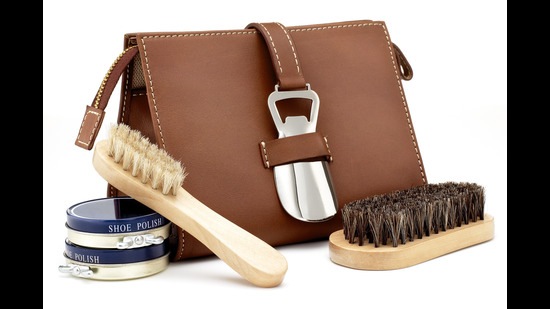Winter calls for the yearly routine of removing your thickest and cold weather ensembles from your wardrobe corner and giving them a revamped look. A part of these winter wardrobe essentials consists of leather jackets, pants and leather boots. “Leather is intrinsically a durable material, but durability is related to the grade of leather. The best leather is full-grain and top-grain, not genuine leather,” shares Saahil Tiger Nandrajog, a leather expert and founder at Tiger Marrón.
Be it vegan or pleather, storing leather for a long time can sometimes lead to its wearing off. Aditi Kapur Chawla, a leather expert and founder, The Leather Story, says, “While an expensive material, leather actually is low maintenance if just a little care is taken while using and storing your leather accessories and garments.”
“Leather items should be stored in a cool and dark place, away from the sun, as they can cause mildew (mold) if exposed. Store leather items with a pouch or two of silica gel to keep any kind of moisture at bay,” shares Natwar Agarwal, leather expert and co-founder at Bacca Bucci.
Known to be an important accessory for both men and women, most people like to invest in leather. So, it is equally important to take good care of it. Read on to know how you can care for your leather items:
RIGHT CLEANING
For cleaning your leather items, the rule of thumb is to use a gentle brush or a dry microfiber cloth to clean it on a regular basis and to ventilate your leather items frequently. “Wipe moisture or water as soon as you can and do natural, non-thermal drying of damp leather,” explains Agarwal. It is also important not to wipe it too aggressively or with a material that may scratch it.
Use water or leather-specific cleaning chemicals instead of other cleaning agents. “One of my hacks is to use saddle soap to lubricate and clean my leather,” explains Nandrajog. On fragile leathers, common household cures like baking soda, white vinegar, cream of tartar, and lemon juice can be abrasive and exacerbate the issue.
Another point to note is not to soak it in water, as that will de-shape the articles, says Chawla.
STORE IT WELL
The storage of leather articles is very important. The basic rule is to first clean the items before storing them away. In the case of leather shoes, wipe away any sweat before storing them, as moisture can cause fungus to grow. Whereas, with garments, the outer shell should be wiped clean. Make sure the inner lining is also dry before storing.
Do not store leather items directly in the sunlight, as it can cause the leather colour to fade away. Ditch the plastic bags and opt for cotton dust bags to store leather shoes and bags, which will also help them last longer.
STAIN REMOVAL

As soon as stains appear, treat them and don’t let them dry out. Wipe clean the stains with a slightly damp cloth. Baby wipes can be used to clean the edges as well, as the light stains/dirt marks on the inside lining.
If it is a serious stain, cover it with cornstarch or talcum powder and leave it to sit overnight. If the discolouration is not gone, try again with a dish washing liquid. Apply leather conditioner after the stain has been removed.
Try using natural leather polish to hide stains on dark leathers. Do test the leather polish on a hidden part before using it on the main panels.
HOW TO FIX ROUGH LEATHER PRODUCTS
When leather gets really dry, it’s helpful to moisturise it with leather oils and creams. Using natural oils such as coconut, avocado or jojoba oil will allow the pores to open and give the materials some time to breathe. The leather will also get softer and darker as a result.
If that is not accessible, then you can also use a gentle face cream on the leather. Ensure to use a specialised leather conditioner every three to six months to keep leather supple.


